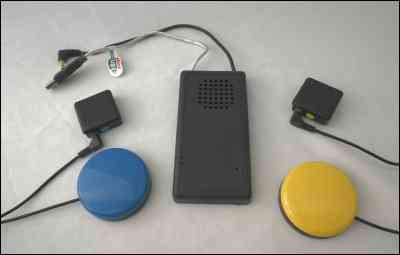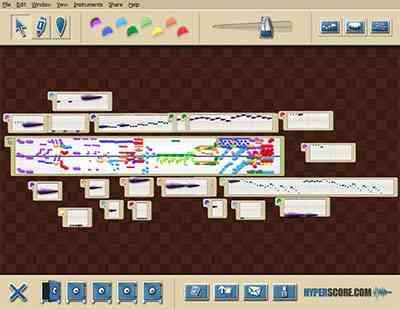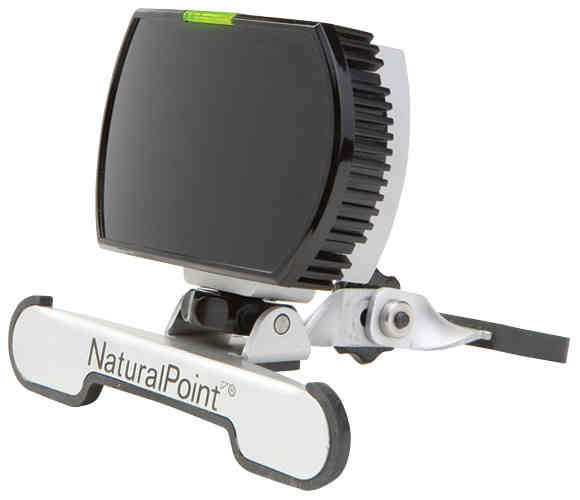
Y ou can’t just listen to music; you have to make it.”
— Tod Machover, MIT, TED mp4.
T he image of the ideal care setting today is one that nurtures physical, social, and creative activity—incorporating arts such as music, dance, and painting as beneficial agents for sustaining health... We are building care settings that are spacially generous and offer services that motivate activity, companionship, and the will to enjoy.”Disability Arts is a term that needs to be understood within the context of the whole Disability Rights Movement. It’s a matter of distributive justice and fairness, toward those who are affected by disabilities of various kinds. I recently came across the TED website, which, among its many many mp4s, has more than 300 recorded talks that have something to do with music. If you click on the image below (of cerebral palsy sufferer, Dan Ellsey, performing one of his compositions for an audience at MIT this March), you can watch a 20-min video of an example of assistive technologies to enable disabled individuals to compose and perform their music.
— Elizabeth Brawley, Design Innovations for Aging and Alzheimer’s.

Ellsey uses a software app called Hyperscore™, developed at MIT Media Lab. The compositions need not be electroacoustic ones like this one; however, performances by disabled persons may often utilize MIDI and waveform-sampled libraries or hyperinstruments or other means of emulating traditional acoustic analog instruments.


This blog post is not primarily about Ellsey or MIT Media Lab, though. It is a continuation of the previous post on ‘assistive technologies’, and aims to help you fill a gap in currently available access to music-making by persons with significant motor impairments, by providing some links and information regarding some relevant products. There are many new, affordable, portable, easy-to-use devices intended to allow persons with disabilities to play music on a MIDI synthesizer or keyboard. The primary target group for these devices (and for this CMT blog post) is disabled persons who are already using computers, communication devices, and powered wheelchairs. A suitable switch interface and controller can connect large-actuator switches (like the SmartBox ones pictured at the top of this post) to any MIDI synthesizer/sequencer. Besides the software and pointing devices and so on, be sure to ‘sweat the small stuff’ as well, such as Grid-2 software-controlled switches or foot-switches to control multi-outlet powerstrips, to simplify turning equipment on and off. Usability does not just concern the software or PC UI; it concerns the user interface for the whole system or environment that the disabled person is going to use.

Hands-free pointing devices are very helpful in mitigating musculoskeletal or motor disabilities. SmartNAV™ is one of the better ones recently introduced. SmartNAV™ is available through a number of distributors here, here, and here. The SmartNAV sits on top of your PC monitor and replaces your conventional mouse and lets you control the mouse-cursor by moving your head.
Originally designed for game control, the SmartNAV head mouse enables users to access Windows, Microsoft Office™ apps, and other programs all hands-free. You can also control Grid-2 or other software controlled switches with the SmartNAV, which is a faster alternative to a switch or direct access for some users. The SmartNAV device consists of a sophisticated infra-red camera that you place above your screen. This follows a small reflective dot so that you can move the mouse pointer by moving your head. The pointer movement can be adjusted for speed and sensitivity.
To use the SmartNAV, you simply place a small reflective dot on your forehead or glasses and position yourself so that the IR sensor on top of your monitor can detect motion of the dot. (A baseball cap is also available, incorporating a reflective dot on the peak and rear, although other kinds of hats or headbands will work equally well if you prefer not to put a dot on your forehead or eyeglasses.) The SmartNAV comes with the Sensory Software WordWall™ program. This allows you to left-click, right-click, drag, and so on, by ‘dwelling’ (resting the mouse pointer over one spot on the screen).

SmartNAV™ is a bit expensive (about $400 to $500, depending on the options and accessories you choose), but it’s rugged and well-designed. The new Model 4 SmartNAV has 1280x480 pixel resolution with a 41-degree field-of-view, so that it works well with hi-res monitors and the UIs of conventional software. The pointing spatial resolution and ergonomics are good enough to make using many PC apps pretty efficient. I have not yet tried it with Finale™, Sibelius™, or sequencing software, though. The dense control surfaces of those apps’ user interfaces might be a bit beyond what SmartNAV™ is suitable for. But, for simpler UIs with fewer and larger controls (like Hyperscore™), SmartNAV is fine.

- Machover T, Ellsey D. TED talk, MIT, MAR-2008.
- Tod Machover page at MIT
- TED.com mp4 talks
- HyperScore™ software (HarmonyLine, Inc.)
- HyperScore™ development, MIT Media Lab (Morwaread Mary Farbood page)
- NeatMarketplace.org
- VSAarts.org
- Music & Disabilities. DrakeMusicProject.org
- Experia Inc. MIDIcreator+™, gesture transducer MIDI interface.
- Experia Inc. MIDIwhizz™, accelerometer transducer MIDI interface.
- Experia Inc. Quintet™ instrument.
- Experia Inc. MIDIfloorpad™ MIDI instrument.
- ReMap.org.uk
- Bath Institute of Medical Engineering, BIME.
- National Disability Arts Forum (NDAF), U.K.
- AbilityNet.org.uk
- AIsquared Inc. ZoomText™ 9.1 (for use with large-screen monitor and sheetmusic in pdf or MusicXML formats)
- Rifton Inc. SupportStation™ (can mount a MIDI keyboard on support surface) [1MB pdf]
- Yamaha DGX-620 MIDI keyboard (88 weighted-key keyboard)
- CubeMedia Assistive Technologies
- EnableMart.com wireless switches for controlling PCs, MIDI instruments, etc.
- Inclusive.co.uk switches and controllers
- Zygo-USA.com page-turner device [1MB QuickTime video]
- SmartBox.com Assistive Technology
- Brawley E. Design Innovations for Aging and Alzheimer's. Wiley, 2005.
- Bryant D, Bryant B. Assistive Technology for People with Disabilities. Allyn & Bacon, 2002.
- Eizmendi G, Azkoitia J, Craddock G, eds. Challenges for Assistive Technology. IOS, 2007.
- Mann W, Helal A. Promoting Independence for Older Persons with Disabilities. IOS, 2006.
- Mokthari M, ed. Independent Living for Persons With Disabilities and Elderly People. IOS, 2003.
- Mollenkopf H, Marcellini F, Ruoppila I, Szeman Z, Tacken, M, eds. Enhancing Mobility in Later Life. IOS, 2005.
- Nugent C, Augusto J, eds. Smart Homes and Beyond. IOS, 2006.
- Pain H, McLellan D, Gore S. Choosing Assistive Devices: A Guide for Users and Professionals. Kingsley, 2002.
- Pigot H, Giroux S, eds. From Smart Homes to Smart Care. IOS, 2005.
- Pruski A, Knops H, eds. Assistive Technology: From Virtuality to Reality. IOS, 2005.
- Sacks O. Musicophilia: Tales of Music and the Brain. Vintage, 2008.
No comments:
Post a Comment